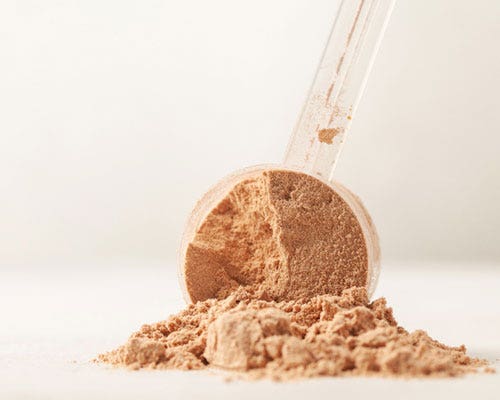The Rainbow Diet: Unlocking the Benefits of Phytonutrients for Your Health
- 8/2/23


Plants are loaded with vitamins, minerals, antioxidants, and other nutrients that are essential for our health. Plants also contain thousands of chemicals called phytonutrients, many of which have impressive health benefits.
What do these phytonutrients do for the body, where can you find them, and how can you get more of them into your diet?
What are phytonutrients?
Phytonutrients or phytochemicals are compounds found in plants that help protect them from bugs, germs, or other dangers. The word “phyto” means plant in Greek, but it is not just fruits and vegetables that are a source of phytonutrients. These compounds can be found in:
- Nuts
- Seeds
- Whole grains
- Tea
- Beans
- Legumes
- Spices
- Herbs
For humans, phytochemicals have anti-inflammatory or antioxidant properties that help keep us healthy. While there are thousands of phytonutrients, some of the most common and well-studied include:
- Flavonoids
- Ellagic acid
- Phytoestrogens
- Carotenoids
- Resveratrol
- Glucosinolates
Each of these types is found in plant foods and may have varying beneficial impacts on human health.
Health Benefits of Phytonutrients
Overall, the benefit of phytonutrients is that they act as antioxidants helping reduce damage caused by molecules called free radicals. When this damage adds up, it is called oxidative stress. This physical stress is believed to be an underlying cause of aging and many chronic illnesses. Antioxidants help neutralize free radicals and reverse the damage, helping our bodies stay healthy.
Individual phytonutrients have specific benefits. Here are a few of the highlights:
- Flavonoids protect heart health and support detoxification.
- Ellagic acid helps the liver detoxify harmful chemicals.
- Phytoestrogens, act similarly to estrogen in the body and may protect bone and hormonal health.
- Carotenoids have benefits for eye and immune health.
- Resveratrol may help increase lifespan, but at this time only animal studies have found this benefit.
- Glucosinolates protect heart health, and detoxification, and support a normal inflammatory response.
With so many beneficial phytonutrients in existence, it is hard to identify all of the potential health benefits of each chemical. What is known is that we need a variety of phytonutrients for optimal health. So where can we find them?
Where to Find Phytonutrients in Your Diet
The best way to eat a variety of phytonutrients, since there are so many, is to eat a diet loaded with colorful fruits and vegetables.
Each type of phytonutrient discussed above is found in different fruit, vegetable, or other plant-based food. For example, carrots and other orange, yellow, or red vegetables are a great source of carotenoids. Glucosinolates are typically found in cruciferous vegetables, like broccoli or Brussels sprouts. Ellagic acid is commonly found in berries. Resveratrol is in grapes and phytoestrogens are in soybeans.
When you eat a variety of colorful plant foods, you are able to get more of the phytonutrients you need. So challenge yourself to eat at least five daily servings of fruits and vegetables with the biggest color variety possible. Aim for at least one serving of red, orange/yellow, purple, white, and green vegetables or fruits daily. When you eat the rainbow, you are able to consume the biggest variety of phytonutrients for the greatest benefit to your health.
References:
-
Monjotin, N., Amiot, M. J., Fleurentin, J., Morel, J. M., & Raynal, S. (2022). Clinical Evidence of the Benefits of Phytonutrients in Human Healthcare. Nutrients, 14(9). https://doi.org/10.3390/nu14091712
-
Liguori, I., Russo, G., Curcio, F., Bulli, G., Aran, L., Della-Morte, D., Gargiulo, G., Testa, G., Cacciatore, F., Bonaduce, D., & Abete, P. (2018). Oxidative stress, aging, and diseases. Clinical interventions in aging, 13, 757–772. https://doi.org/10.2147/CIA.S158513
-
Perez-Vizcaino, F., & Fraga, C. G. (2018). Research trends in flavonoids and health. Archives of Biochemistry and Biophysics, 646, 107–112.
-
Derosa, G., Maffioli, P., & Sahebkar, A. (2016). Ellagic Acid and Its Role in Chronic Diseases. In S. C. Gupta, S. Prasad, & B. B. Aggarwal (Eds.), Anti-inflammatory Nutraceuticals and Chronic Diseases (pp. 473–479). Springer International Publishing.
-
Desmawati, D., & Sulastri, D. (2019). Phytoestrogens and Their Health Effect. Open Access Macedonian Journal of Medical Sciences, 7(3), 495–499.
-
Eggersdorfer, M., & Wyss, A. (2018). Carotenoids in human nutrition and health. Archives of Biochemistry and Biophysics, 652, 18–26.
-
Singh, A. P., Singh, R., Verma, S. S., Rai, V., Kaschula, C. H., Maiti, P., & Gupta, S. C. (2019). Health benefits of resveratrol: Evidence from clinical studies. Medicinal Research Reviews, 39(5), 1851–1891.
-
Traka, M. H. (2016). Chapter Nine - Health Benefits of Glucosinolates. In S. Kopriva (Ed.), Advances in Botanical Research (Vol. 80, pp. 247–279). Academic Press.





